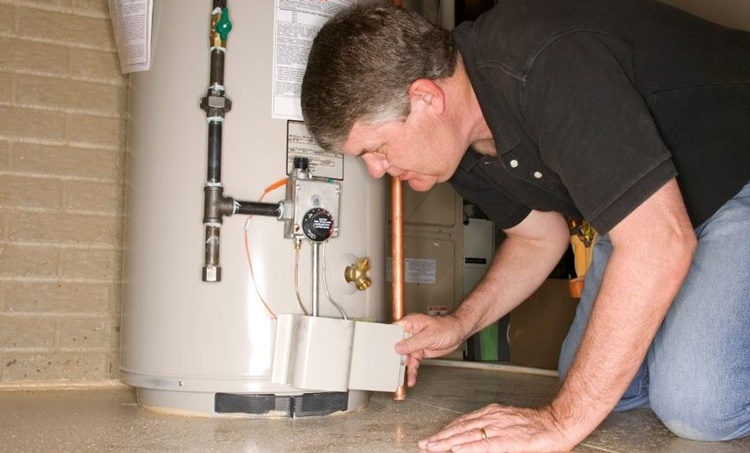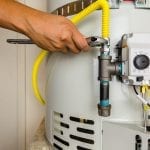Steps to Successfully Care for Your Home's Hot Water System
Steps to Successfully Care for Your Home's Hot Water System
Blog Article
This great article down below on the subject of How to Maintain a Hot Water Heater in a Few Simple Steps is totally captivating. Don't overlook it.

Hot water is vital for day-to-day comfort, whether it's for a rejuvenating shower or washing recipes. To guarantee your warm water system runs effectively and lasts much longer, normal upkeep is crucial. This post offers practical pointers and understandings on how to keep your home's hot water system to avoid disturbances and expensive repair work.
Introduction
Preserving your home's warm water system could appear difficult, however with a couple of straightforward actions, you can guarantee it operates smoothly for many years ahead. This overview covers every little thing from understanding your warm water system to do it yourself maintenance pointers and understanding when to contact professional aid.
Value of Maintaining Your Warm Water System
Regular upkeep not only expands the life expectancy of your hot water system yet likewise guarantees it operates successfully. Overlooking upkeep can result in lowered efficiency, greater energy costs, and even premature failing of the system.
Signs Your Warm Water System Demands Maintenance
Understanding when your warm water system needs interest can protect against major concerns. Look out for indications such as irregular water temperature, odd sounds from the heater, or corroded water.
Understanding Your Warm Water System
Prior to diving into maintenance jobs, it's useful to recognize the standard elements of your warm water system. Typically, this includes the hot water heater itself, pipes, anode rods, and temperature level controls.
Month-to-month Upkeep Tasks
Regular month-to-month checks can help capture small problems prior to they rise.
Purging the Water Heater
Flushing your hot water heater removes debris accumulation, boosting performance and lengthening its life.
Checking and Changing Anode Rods
Anode rods protect against corrosion inside the storage tank. Checking and replacing them when broken is crucial.
Evaluating and Readjusting Temperature Settings
Adjusting the temperature settings guarantees ideal efficiency and security.
Do It Yourself Tips for Upkeep
You can do numerous upkeep jobs on your own to maintain your warm water system in top problem.
Looking for Leakages
On a regular basis evaluate pipes and connections for leaks, as these can bring about water damages and greater bills.
Evaluating Stress Relief Valves
Examining the pressure relief valve ensures it works properly and protects against too much stress build-up.
Protecting Pipes
Shielding hot water pipes minimizes warmth loss and can conserve power.
When to Call a Specialist
While DIY maintenance is beneficial, some problems require specialist expertise.
Facility Issues Calling For Specialist Assistance
Examples include major leaks, electrical troubles, or if your hot water heater is continually underperforming.
Regular Professional Upkeep Benefits
Specialist upkeep can include comprehensive assessments, tune-ups, and guaranteeing compliance with safety criteria.
Conclusion
Routine upkeep of your home's warm water system is vital for efficiency, long life, and cost financial savings. By complying with these tips and recognizing when to look for professional help, you can make sure a reputable supply of hot water without unexpected disturbances.
How to Maintain an Instant Hot Water Heater
Before tinkering with your hot water heater, make sure that it’s not powered on. You also have to turn off the main circuit breaker and shut off the main gas line to prevent accidents. Also turn off the water valves connected to your unit to prevent water from flowing into and out of the appliance. 2. When you’re done, you have to detach the purge valves’ caps. These look like the letter “T†and are situated on either side of the water valves. Doing so will release any pressure that has accumulated inside the valves while at the same time avoid hot water from shooting out and burning your skin. 3. When the purge valves’ caps are removed, you have to connect your hosing lines to the valves. Your unit should have come with three hoses but if it didn’t, you can purchase these things from any hardware or home repair shops. You can also get them from retail stores that sell water heating systems. Read the user’s manual and follow it to complete this task properly. When the hosing lines are connected, open the purge port’s valves. 4. You should never use harsh chemical cleaners or solutions when cleaning your unit. Make use of white vinegar instead. It should be undiluted and you’ll probably use about 2 gallons. 5. Now flush your water heater. This task should probably take about 40 minutes. We can’t give you specific directions for this because the procedure is carried out depending on the type, model and brand of your heater. With that being said, refer to the user’s manual. 6. When you’re done draining the unit, you have to turn off the purge port valves again. Remove the hosing lines that you earlier installed on each of the water valves. Put the valve caps (purge port) back in their respective places and be very careful so as not to damage the rubber discs that are found inside these caps. 7. Now that everything’s back in place, check your user’s manual again to find out how to reactivate your water heating system. 8. Once it is working, turn one of your hot water faucets on just to let air pass through the heater’s water supply pipes. Leave the tap on until water flows smoothly out of it. https://www.orrplumbing.com/blog/2014/september/how-to-maintain-an-instant-hot-water-heater/

Do you like more info about How to Maintain Your Water Heater & Prolong its Life? Leave a review further down. We would be glad to find out your ideas about this blog entry. We hope that you come back again in the near future. Loved our content? Please quickly share it. Help other people locate it. Many thanks for going through it.
Explore Now Report this page